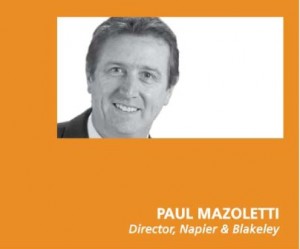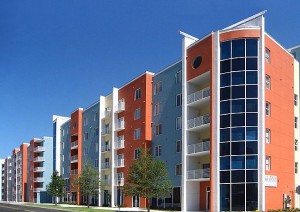 Property Tax Profiling
Property Tax Profiling
 Over the last 30 years or so the quantity surveying industry has waxed lyrical about all things property tax deduction related, the most recent being property tax profiling.
Over the last 30 years or so the quantity surveying industry has waxed lyrical about all things property tax deduction related, the most recent being property tax profiling.
Obviously, quantity surveyors would like to think as an industry we’ve added some value and therefore made a very positive difference to our clients after tax bottom-line.
We have sliced and diced property tax every possible way, providing the platform for balance and maximum return from your property investments and we’ve also tried to address the perception that you can’t afford it. An affordability study needs to address a variety of property information to provide a balanced view of how your asset might perform over a period of time and how you can influence that performance.
Whether the investment is residential or non-residential the same basics apply:
- What will it cost?
- What are the risks involved? And
- What return will I secure?
These questions have multiple layers:
- What will it cost (short, medium and long-term)?
- What kind of costs are they (capital, repairs and maintenance, refurbishments or compliance costs)?
- What are the legal obligations?
- What must I spend to benefit and retain the tenant?
- What risks are involved (physical, compliance or tenant retention)?
- Who ‘makes good (repairs)’ the space at lease expiry?
- How do I maximise and maintain my return?
- Are there development opportunities that will add value to the property?
If you consider all of these questions about your asset in isolation, they provide some useful information. However, the maximum benefit is achieved by considering all these issues at once, to create a clear profile of how your asset will perform over time, thereby providing certainty, clarity, sound information for a financier and a strong platform for your accounts.
 In one illustration, a commercial investment property is purchased for $5,250,000. The initial return is 8 per cent with $420,000 annual rental. The property has 1,600m² net-lettable area and is 10 years old. A lease is in place for five years with fixed rental increases of 4 per cent so at lease end, the possible value of the asset at 8 per cent is $6,387,000. Not a bad gain over five years – if it can be achieved.
In one illustration, a commercial investment property is purchased for $5,250,000. The initial return is 8 per cent with $420,000 annual rental. The property has 1,600m² net-lettable area and is 10 years old. A lease is in place for five years with fixed rental increases of 4 per cent so at lease end, the possible value of the asset at 8 per cent is $6,387,000. Not a bad gain over five years – if it can be achieved.
However, in addition to financing costs over the lease period, a building of this age will also have other physical costs associated with ownership over time. These need to be considered, planned and managed to keep the property aesthetically and functionally attractive beyond the current five year lease to retain future value. Assuming your pre-acquisition due diligence study provides details of the risk factors associated with the property and notes that the related capital expenditure and repairs over five years it is likely to be between $350,000 and $400,000. This will fund works such as Building Code compliance issues, replacement of floor coverings, services upgrades, painting and general upkeep.
The cost of the capital works and repairs are tax deductible against income in differing ways however they also have recurring cash flow impact. Offset against ongoing costs of ownership are the tax deductions available for building allowance and plant depreciation for the initial acquisition and again for additional expenditure throughout ownership. These deductions provide additional cash flow benefit and after-tax dollars to go towards funding future upgrade works on the asset.
The affordability may still be an issue but again there are a number of tax deduction areas where you can claim deductions without any initial outlay.
Money for nothing and your tax for free, ‘How does it work?’ you say. Well, it goes something like this:
Your tenant has 1,000m² of space. Ten years ago at the beginning of the lease they spent $900,000 fitting out the shell you provided. They have now made a decision to relocate. As part of the make good settlement, an amount of $300,000 is agreed and they walk away. You are left with a ten year-old fit-out, wondering what you should do. Will a new tenant come in the space at the right rental, or will you have to return the space to base building?
Answers to these questions can be significantly impacted by the following:
- The lessee claims the write-off of any un-deducted value of plant and equipment only that has been abandoned as a result of the move; and
- As the base building works that were carried out by the lessee (fixed partitions, ceilings, power, pluming, etc) were not demolished by the lessee, the un-deducted value of these works passes on to the vendor in accordance with the rules of Division 43 of the Income Tax Assessment Act (ITAA). The value of the ‘give away’ should be considered by the lessee in the make good settlement.
Facts for the Landlord:
- The $300,000 received from the tenant for their make good liability goes into the landlord’s books as assessable income;
- If the fit out is subsequently demolished, and $300,000 is spent in making good, then the make good works will qualify as repairs and are therefore immediately deductible as long as there are no improvement works carried out during the make good; and
- The un-deducted value of Division 43 building allowance (base building type items) enters the books of the landlord at approximately $200,000. This amount is deductible if the fit out is demolished. Otherwise, an annual deduction of approx $6,500 can be taken for this fit out that has cost the landlord nothing. This deduction, if taken, will reduce the capital gains cost base of the asset.
Now if you think that you have misread this, you are mistaken. People are conditioned to think that nothing in life is free. However, the fact is that in this instance, it is a free kick as far as after cash flow is concerned. To a landlord, it represents a significant after tax return.
In summary, under the ITAA there are many legislated ways to generate a tax deduction:
- The initial depreciation schedule when you build or buy (new or old), that defines the platform for your deductions going forward;
- Deductions against the cost of fitting out a space;
- Future deductions for additional unexpected repairs and maintenance;
- Write off of the remaining value of the demolished items; and
- Write off any future deductions from inherited fit out.
The affordability consideration should capture all of the above information and take the form of a property tax profile which will allow you to:
- Understand, plan and manage all costs associated with the physical ownership;
- Manage all building risks associated with ownership; and
- Manage your true return proactively, by controlling cost and risk and efficiently capturing all available tax benefits.
So not only can you afford it, you can maintain a solid return as well, with no surprises.
Written by Paul Mazoletti
Displayed in REIQ Journal May 2013
